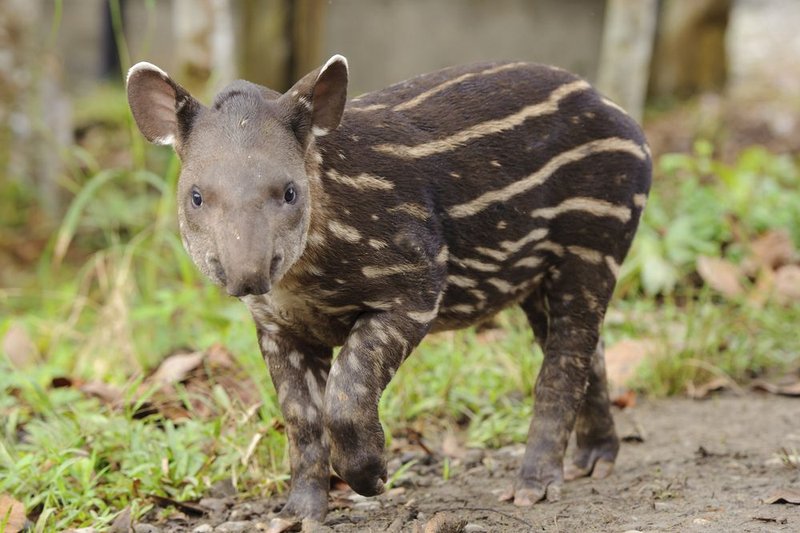
You might be surprised to learn that these mammals are remarkably resilient. They face unique challenges, from extreme weather patterns to the presence of predators. But how exactly do they manage to stay afloat, quite literally? Let’s dive deep into the world of Brazilian tapirs and uncover the various strategies they use to thrive in harsh environments.
Adaptations for Survival
First up, let’s talk about the physical adaptations that make Brazilian tapirs so unique. These animals are built like tanks, weighing between 500 and 700 pounds. Their stout, barrel-shaped bodies and short legs may not seem flashy, but they serve crucial purposes. The tapir’s wide feet are perfect for paddling through swampy areas and muddy terrains. This allows them to easily access water sources, which is vital, especially during the dry season.
Moreover, the Brazilian tapir has a thick, tough hide that helps shield it from scratches and bites. But here’s the kicker: their skin also secretes a sort of natural sunscreen. Seriously! This protective layer helps them fend off harmful UV rays while they bask in the sun. You might be wondering how they manage to stay cool when things heat up. Well, their affinity for water plays a big role. Tapirs are fantastic swimmers and often cool off by submerging themselves in rivers and lakes.
Diet: The Art of Foraging
Diet is another critical aspect of how Brazilian tapirs survive. These herbivores have a varied diet, munching on leaves, fruits, and aquatic plants. What’s interesting is their knack for foraging. Tapirs are excellent at using their elongated snouts to reach foliage high above the ground or to dig up roots and tubers. Imagine being able to browse for food in every nook and cranny of your environment.
During the rainy season, when food is plentiful, tapirs feast on a smorgasbord of fruits, making their diet rich in nutrients. But as the dry season rolls around, food becomes scarcer. This is when their survival skills really shine. They can go for days without eating, relying on stored body fat to weather those tough times. It’s like having a built-in reserve tank to draw from when the going gets tough.
Behavioral Adaptations
Behavior plays a huge role in the survival of Brazilian tapirs, too. They’re primarily nocturnal, meaning most of their activities—like feeding, mating, and socializing—happen under the cover of darkness. This night-owl lifestyle helps them avoid predators like jaguars and predators that come out during the day. It’s a smart way to dodge trouble!
Socially, Brazilian tapirs are quite interesting. They’re generally solitary, which means they prefer to go about their lives without a herd. However, females and their young do bond closely, and that bond helps protect the little ones from danger. You might think being alone could be risky, but for tapirs, it allows them to cover more ground while foraging and avoid drawing attention to themselves.
Water Sources: The Lifeline
Water is life, especially for Brazilian tapirs. They’re drawn to rivers, lakes, and swamps, making these areas vital for their survival. Tapirs are often found in regions that provide easy access to water, which serves multiple purposes. Not only can they hydrate, but water bodies also offer them a safe retreat from predators.
During the dryer months, when water becomes scarce, tapirs have an amazing ability to navigate to find new water sources. They can travel several miles in search of a reliable drinking spot. This knack for finding water is crucial, especially since they need to stay hydrated in the heat of the Brazilian sun.
Predators and Defense Mechanisms
While Brazilian tapirs do have their fair share of challenges, they’ve developed effective defense mechanisms to keep themselves safe. As mentioned earlier, their nocturnal habits help reduce encounters with predators. But when they do face a threat, their primary instinct is to flee. Thanks to their powerful legs and strong bodies, they can quickly dash away from danger.
Another interesting defense tactic is their ability to remain still when they feel threatened. Their exceptional camouflage helps them blend into the surrounding foliage, making it difficult for predators to spot them. It’s a bit like playing hide-and-seek in the jungle!
Conservation Challenges
Despite their impressive survival skills, Brazilian tapirs face significant challenges. Habitat loss due to deforestation and urban development poses a serious threat. As rainforests shrink, tapirs lose both their living space and their food sources. Climate change also plays a role, altering the rainfall patterns and affecting the availability of water.
Human activity, such as poaching and agriculture, further complicates their survival. It’s a tough world out there for these gentle giants. Conservation efforts are underway, aiming to protect their habitats and ensure that these remarkable animals continue to thrive.
The Importance of Brazilian Tapirs
So, why do Brazilian tapirs matter? Beyond their unique adaptations, they play a crucial role in maintaining the ecosystem. By foraging and spreading seeds through their feces, they help promote plant growth. This, in turn, supports other wildlife in their habitat. Think of them as unsung heroes of the rainforest, quietly contributing to the health of their environment.
When we take steps to protect tapirs and their habitats, we set off a ripple effect that benefits many species, including ourselves. Preserving biodiversity is vital for a balanced ecosystem, and every creature, including the Brazilian tapir, has a part to play.
In conclusion, Brazilian tapirs are fascinating creatures that have adapted beautifully to survive in harsh environments. Through physical adaptations, behavioral strategies, and a strong connection to their water sources, they showcase the resilience of nature. As we continue to learn about and support these incredible animals, we help ensure that they—and their ecosystems—thrive for generations to come.

